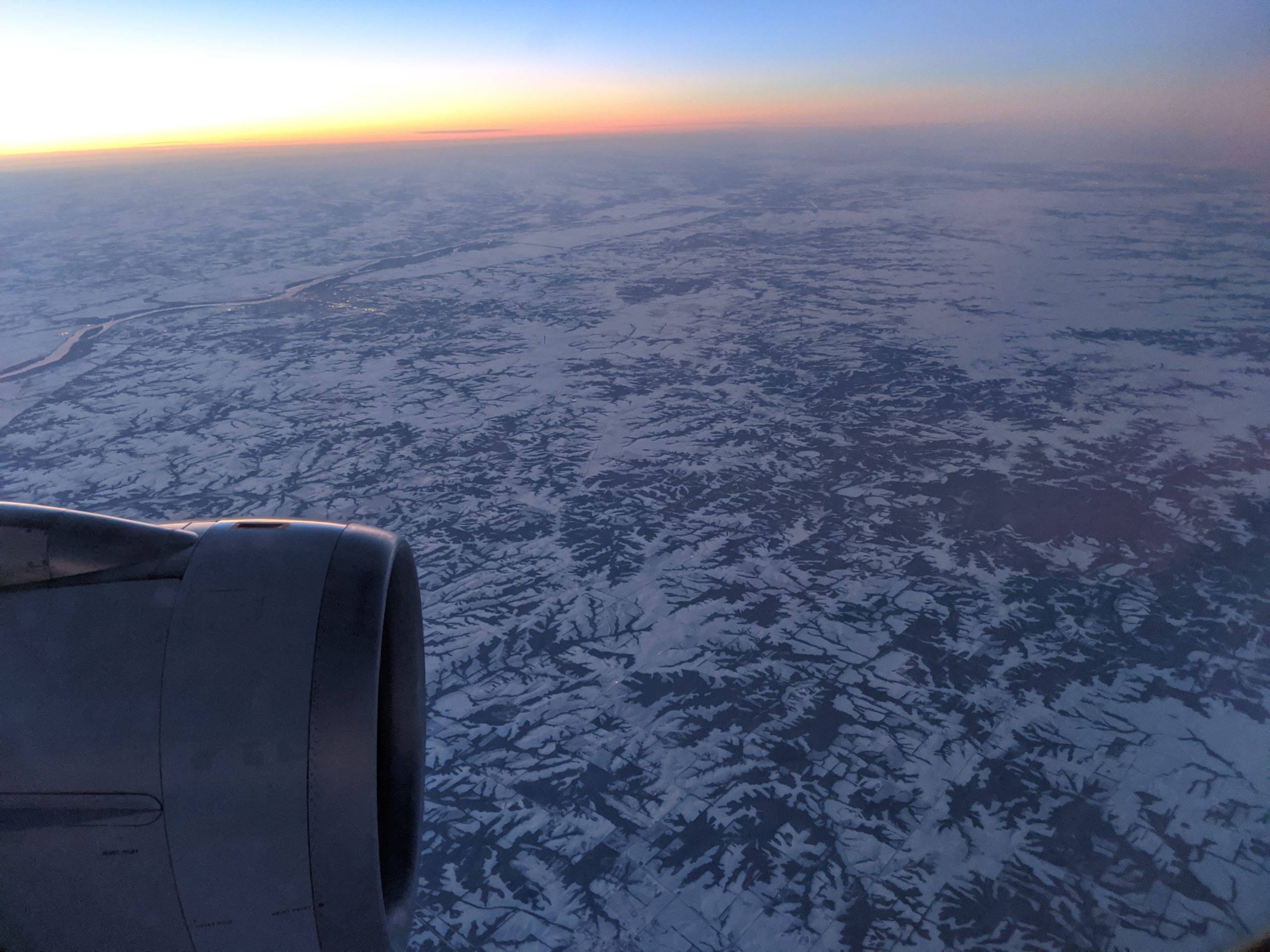In late February and early March came periods of devastation for Chile. Those periods came in the form of ” . . . the most severe earthquake experienced by the oldest inhabitant . . . ” as stated in an account of the events. The account continues, “A bad earthquake at once destroys our oldest associations: the earth, the very emblem of solidity, has moved beneath our feet like a thin crust over a fluid; – one second of time has created in the mind a strange idea of insecurity, which hours of reflection would not have produced.”
In early March, upon surveying the damage wrought by the trembler in the port city of Talcahuano, the account continues ” . . . that not a house in Concepcion or Talcahuano was standing; that seventy villages were destroyed . . . ” The account details the overwhelming power not just of the earthquake, but of the tsunami that followed. The land was incredibly damaged by this unprecedented natural assault, showing ” . . . fresh fractures and displaced soil . . . “, and in some places ” . . . permanent elevation of the land . . . upraised two to three feet . . . At the island of Santa Maria, the elevation was greater . . . ” One eye witness reported ” . . . beds of putrid mussel-shells still adhering to the rocks, ten feet above the high-water mark.” The tsunami brought its own brand of destruction. “Shortly after the shock, a great wave was seen from the distance of three or four miles, approaching in the middle of the bay . . . ” The wave reportedly washed up as high as 23 vertical feet above the highest spring tides, capsizing boats, dragging cattle off hillsides, and leaving vast pools of salt water in ravaged houses.
With the changing tide and the forces of earthly upheaval came human tides and human upheaval. People gathered together in orchards for survival, “At first . . . as merry as if it had been a picnic; but soon afterward heavy rain caused much discomfort, for they were absolutely without shelter.” “Those who had saved any property were obliged to keep a constant watch, for thieves prowled about . . . ” “Hundreds knew themselves ruined, and few had the means of providing food for the day.”
These accounts are painful and haunting, but they do not come from the recent earthquake that ravaged Chile and its surrounding environs. Rather, they are the account of the Chilean earthquake of Feb. 20, 1835, as penned by Mr. Charles Darwin during his voyage on The Beagle [1]. Fortunately for history and natural history, he was witness to many of the events, gathered accounts where he was not witness, and used these events to formulate hypotheses about geological evolution and the malleable nature of the earth.
What, then, were the lessons of Concepcion? Darwin noted the coincidences – or, more accurately, the anti-coincidences – between volcanism (volcanic activity) and earthquakes. He was witness to the eruption of the volcano named Osorno, and found out later that at the same time, within 2000 miles and along the same range of mountains, had been eruptions of the volcanoes Aconcagua and Coseguina. These were accompanied by an earthquake felt for 1000 miles. Near Concepcion, the volcano Antuco had recently gone dormant before the great quake on Feb. 20. From this, Darwin drew associations between the motion of the earth and the movement of lava through the earth. He attributed the release of energy in the quake to the inability of Antuco to erupt. While the theory of plate tectonics was still MANY years away, Darwin was beginning to peel away the layers of mystery surrounding geological phenomena.
Darwin also drew connections between volcanism and the rise of mountains. Prior to his observations and his thinking on the subject, it was a common belief that the earth was unchanged since its creation (which was dated by at least one Biblical scholar to about 6000 years prior to the events of Feb. 20). Darwin was witness to real changes in the earth’s configuration – the rising of land, the displacement of sea life tens of feet vertically. This event helped him to understand his previous observations of fresh sea shells hundreds of feet above sea level, in places where now trees grew. The earth was by no means fixed, and from this he reasoned that mountains represent the slow rise of rock due to the movement and expulsion of lava. These were bold claims in the time of Darwin, but unlike others who might have made similar claims, Darwin had real evidence on his side.
Darwin’s more practical observations spoke to the expectation of consequences to follow the quake. Quite apart from his immediate accounts of the toll on human life, he also made two observations that have real consequences for everyday life. The first was his observation of the way in which buildings were destroyed. Fire was something that he noted was a serious problem after the quake. “The thatched roofs fell over the fires, and flames burst forth in all parts.” Construction materials less flammable than thatch (or related materials) are clearly a key ingredient in the aftermath of a devastating earthquake (witness the human toll due to fire in the 1906 San Francisco earthquake). Darwin also observed that the most destruction suffered by walls was lessened when the wall was oriented perpendicular to the seismic waves. ” . . . walls running S.W. and N.E. which presented their ends to the point whence the undulations came, would be much less likely to fall than those walls which, running N.W. and S.E., must in their whole lengths have been at the same instant thrown out of the perpendicular . . . ”
His other observations speak as a warning sign to any survivor of a quake, or any nation that would render assistance to a people devastated by the phenomenon. Darwin noted the proliferation of after-shocks, speaking of “Innumerable small tremblings [that] followed the great earthquake . . . within the first twelve days no less than three hundred were counted.” The danger to life continues well after the first major shock. In addition, robbed of shelter and a steady food supply, life continues to be threatened. After the shaking and the fire, there is a final source of destruction that may bring late woe upon a weary people: rain. Noting that the quake and the tsunami had created great fissures in the land, “Some . . . a yard wide,” Darwin observed that ” . . . . many enormous masses had already fallen on the beach . . . ” He then noted that ” . . . the inhabitants thought that when the rains commenced far greater slips would happen.”
Speaking to us from 175 years ago, Darwin’s account serves as a relevant warning about the changing Earth. While it seems a thing hard to move, the Earth’s surface is an evolving frontier. Like the punctuated equilibrium of Stephen Jay Gould, earthquakes are the sudden shocks that create rapid change in our environment. They are black swans, above our control but not our understanding. Though we lack the ability to predict when they will happen we know that they DO happen.
Let us not allow our compassion to fatigue us; the people of Haiti and Chile, and those ravaged across the globe by the shaking of the earth, require our own surge of good will in their time of crisis. We must not be so short-sighted as to think that crisis can abate in a week, or even a month. The rains of Chile and Haiti will bring a fresh crop of misery to those without shelter, as the inhabitants believed they would in 1835. Suffering will not go away when the Red Cross stops campaigning for dollars. Nor should we become so focused on the crisis du jour that we forget that somewhere else, the earth will be moving. Our cities must be prepared, our instincts ready to survive and to overcome the chaos of widespread destruction. For in a world where adaptation is the defining characteristic of continued survival, a human equipped with the power to KNOW that change is inevitable will be best suited to sustain a world beyond that change.
[1] “Voyage of the Beagle Round the World: Journal of Researches into Natural History and Geology.” Charles Darwin.



